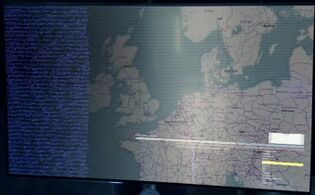Western Europe: Difference between revisions
From Tardis Wiki, the free Doctor Who reference
(The first two series of SJA do not appear to have specific dates given.) Tag: 2017 source edit |
No edit summary Tag: 2017 source edit |
||
| Line 2: | Line 2: | ||
{{Wikipediainfo}} | {{Wikipediainfo}} | ||
In the [[2000s]], a [[NATO]] [[satellite]] covered '''[[West]]ern [[Europe]]''', including the [[British Isles]]. ([[TV]]: ''[[Warriors of Kudlak (TV story)|Warriors of Kudlak]]'') | In the [[2000s]], a [[NATO]] [[satellite]] covered '''[[West]]ern [[Europe]]''', including the [[British Isles]]. ([[TV]]: ''[[Warriors of Kudlak (TV story)|Warriors of Kudlak]]'') | ||
Charles I of France, also known as [[Charlemagne]] [[rule]]d the [[Frankish Empire]] for [[46 (number)|46]] [[year]]s until his [[death]] in [[814]], uniting [[Western Europe|Western]] and [[Central Europe]] for the first time since the [[Roman Empire]]. His [[reign]] saw a [[renaissance]] in European [[culture]]: [[architecture]], [[art]], [[literature]] and [[music]] all flourished, while [[Medieval Latin]] developed as Europe's first [[common language]]. ([[PROSE]]: {{cs|The Time Traveller's Almanac (reference book)}})) | |||
[[Category:European regions]] | [[Category:European regions]] | ||
[[Category:Locations from the real world]] | [[Category:Locations from the real world]] | ||
Revision as of 16:45, 2 September 2023
In the 2000s, a NATO satellite covered Western Europe, including the British Isles. (TV: Warriors of Kudlak)
Charles I of France, also known as Charlemagne ruled the Frankish Empire for 46 years until his death in 814, uniting Western and Central Europe for the first time since the Roman Empire. His reign saw a renaissance in European culture: architecture, art, literature and music all flourished, while Medieval Latin developed as Europe's first common language. (PROSE: The Time Traveller's Almanac [+]Loading...["The Time Traveller's Almanac (reference book)"]))

